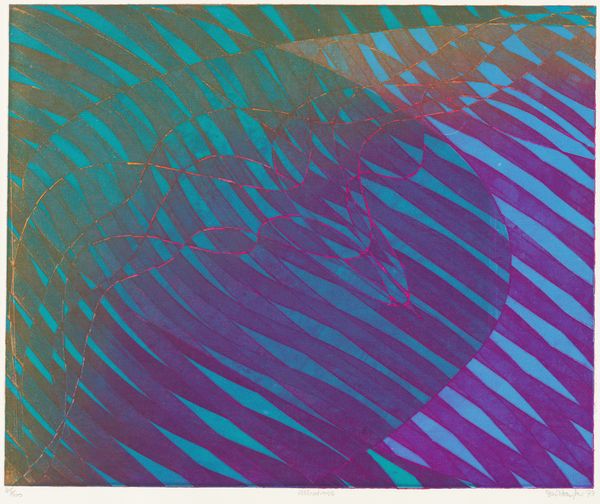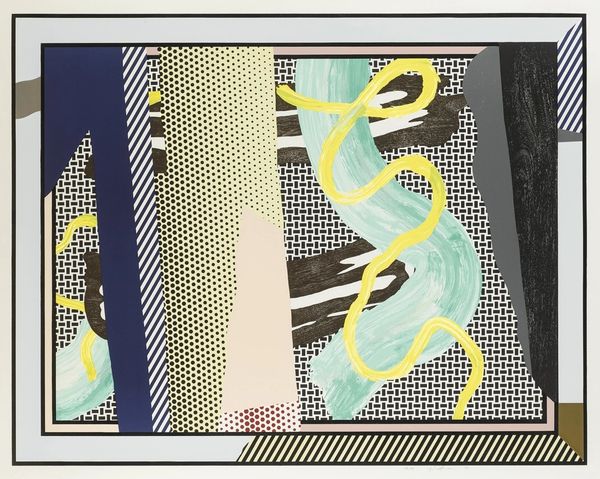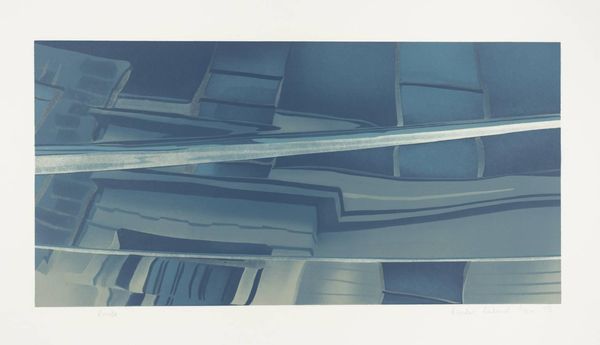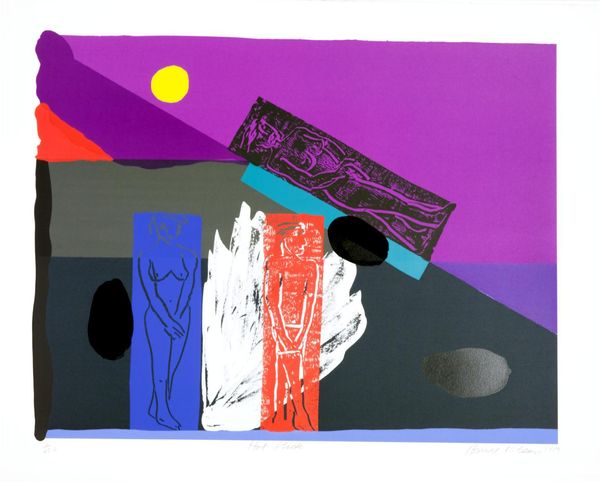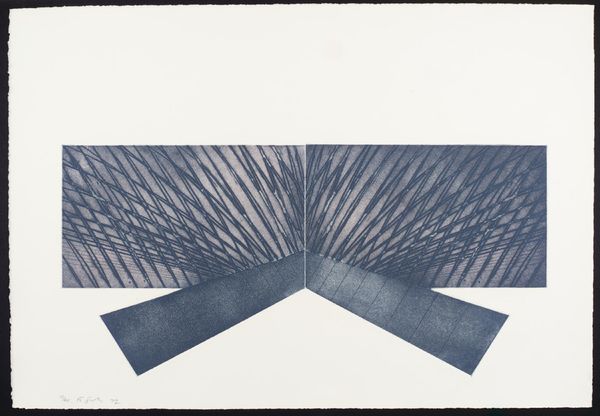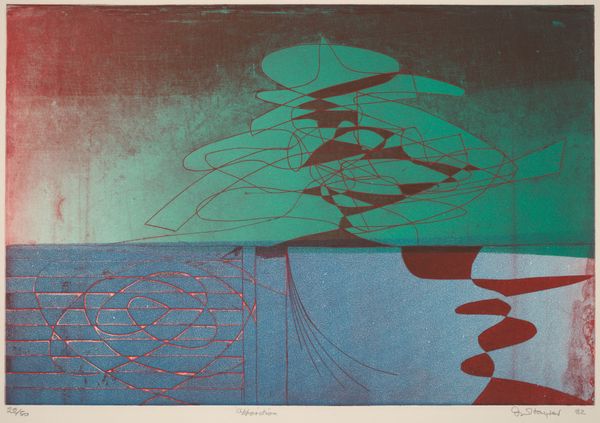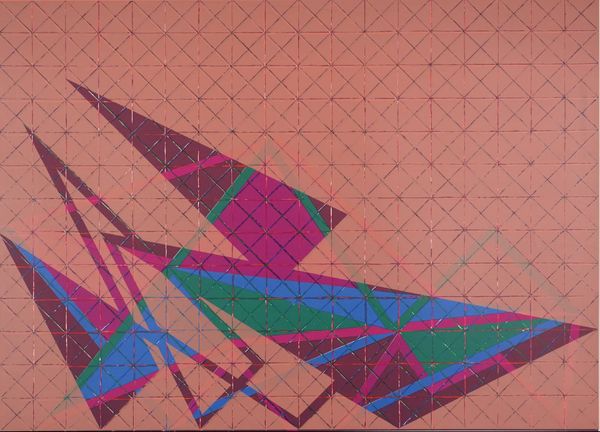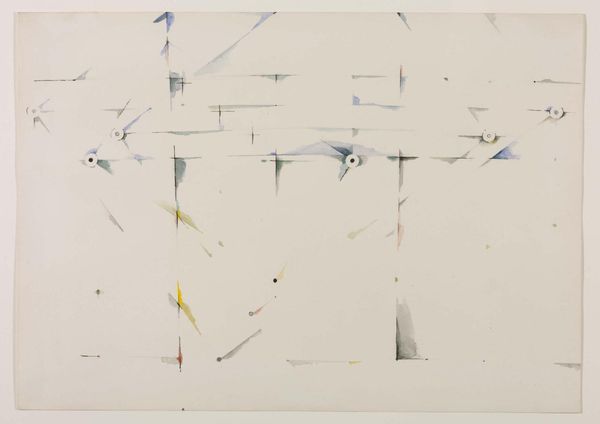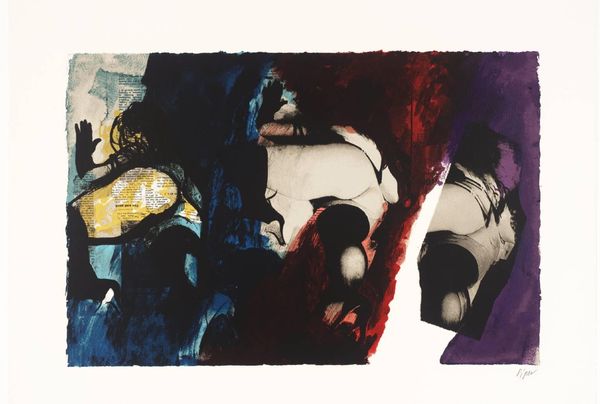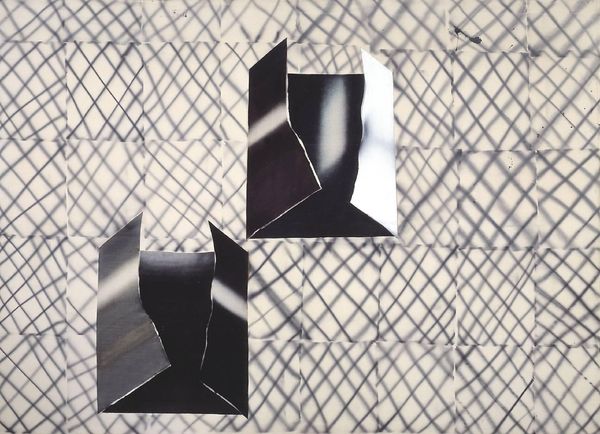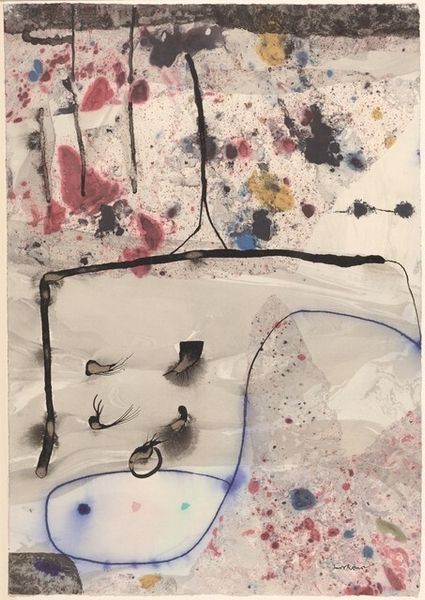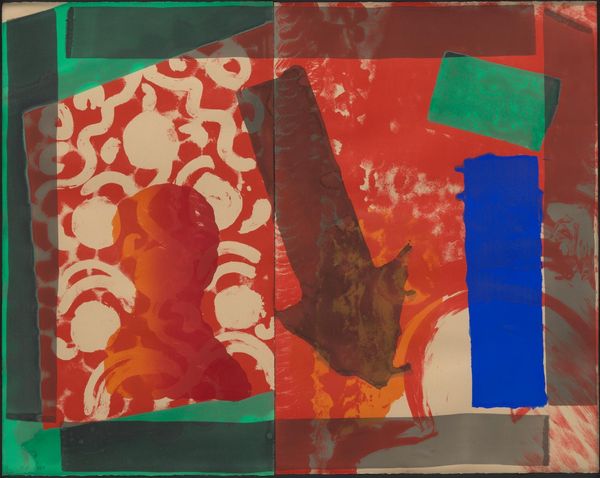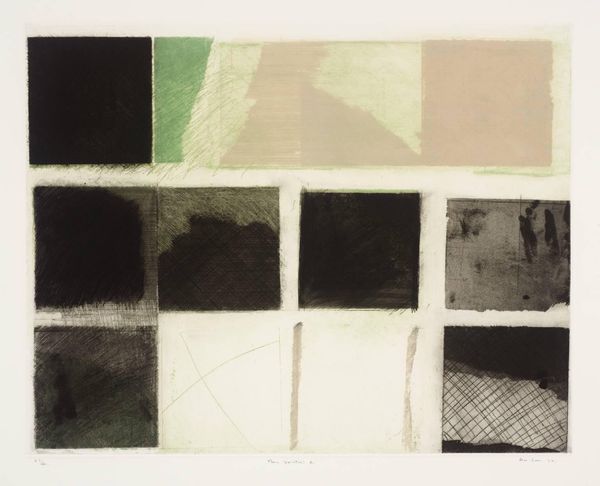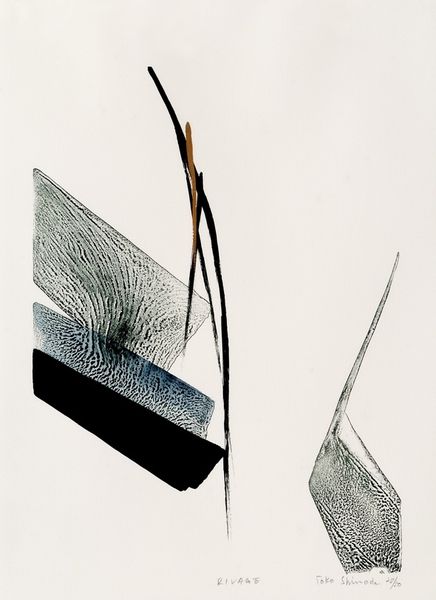
Copyright: James Rosenquist,Fair Use
Curator: Right now, we’re standing in front of James Rosenquist's large-scale mixed-media print and collage, "Off the Continental Divide," created in 1974. The artwork is now held here at the Tate Modern in London. Editor: My first impression is how fragmented it feels. It’s like a deconstructed domestic scene but with an unnerving artificiality due to the colors. I’m simultaneously drawn in and kept at a distance. Curator: Rosenquist, who is typically associated with Pop Art, really plays with juxtapositions here. You have stairs ascending next to what looks like stacked rolls of paper, almost like stage curtains or a stylized wig, along with a series of vibrantly colored nails. Editor: The stairs and nails introduce such a sharp sense of perspective. There's an undeniable geometric precision. The staircase, almost devoid of natural color and light, offers a cool counterpoint to the rainbow crumpled background on the left, it looks like someone ran through the painting with different emotions and left these colors. Curator: Exactly. Rosenquist's background in billboard painting definitely informs the composition. It’s not just about placing objects side-by-side; he is playing with depth, layering meaning by setting contrasting scenes within the same frame. There’s a sense of depth but also flatness that keeps the viewer visually off balance. It’s not chaotic, but certainly not harmonious. Editor: The symbolism fascinates me—stairs signify transition or progress, paper stacks and a series of brightly painted nails. Are these perhaps representative of a constructed identity? The nails could almost be symbolic building blocks to put together something solid, yet because they stand alone they feel isolated. There’s no actual hammer, no means to put things together. Curator: That interpretation works quite well! The beauty of Rosenquist’s work lies in how open it is to different interpretations. There's not a direct narrative; it is left for the viewer to bring in the story, and put everything together in their heads. Editor: The journey this artwork took me on was really surprising. It began with feeling fragmented, but the details and juxtaposition had my attention. Now I am left questioning a great deal about perception. Curator: And there you have it, Rosenquist challenging us even 50 years later to think about the everyday, presented in unexpected forms.
Comments
No comments
Be the first to comment and join the conversation on the ultimate creative platform.
